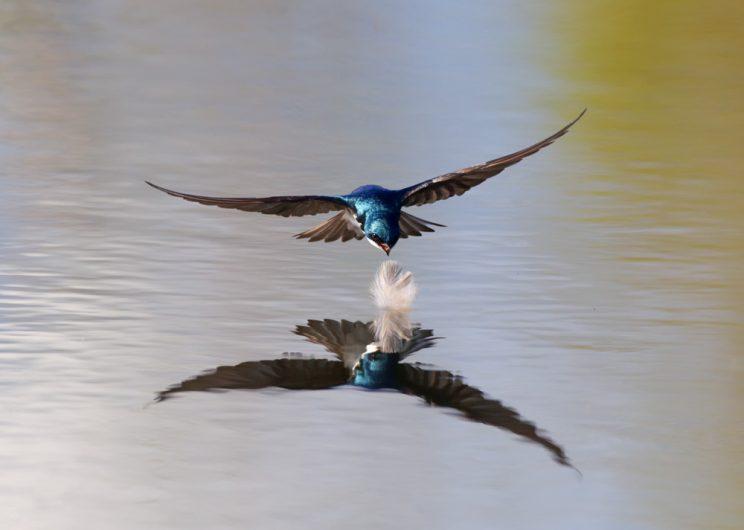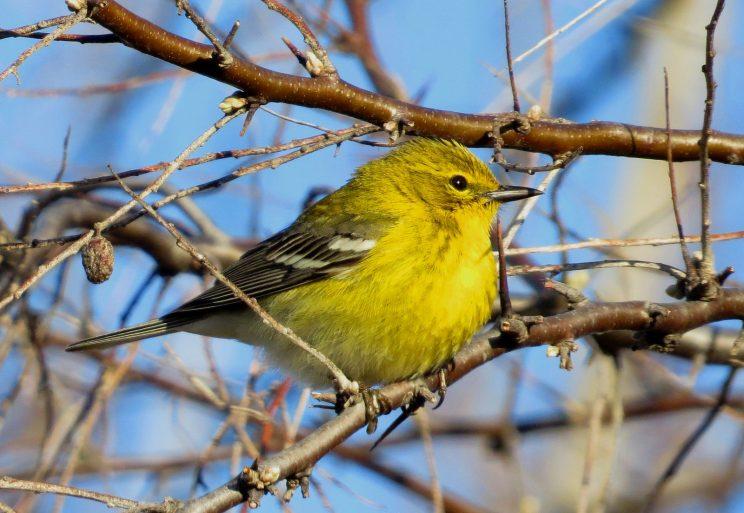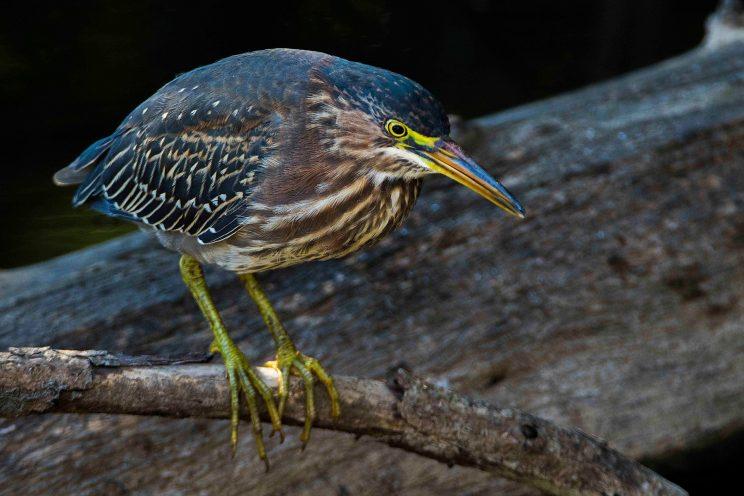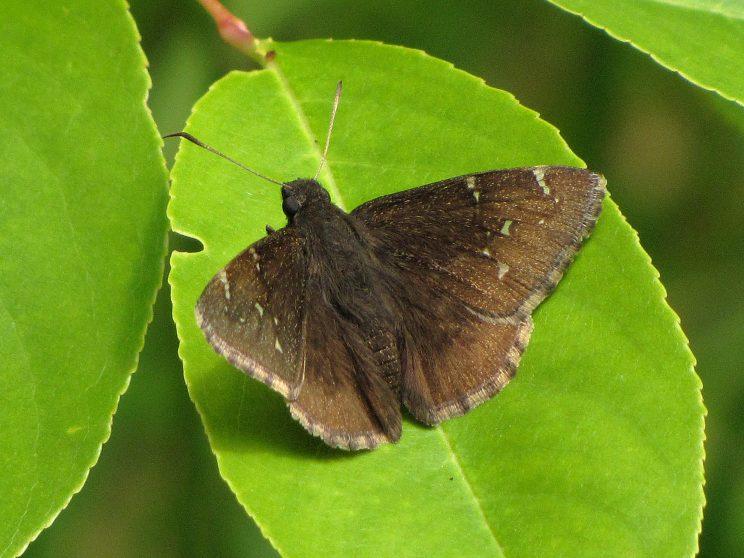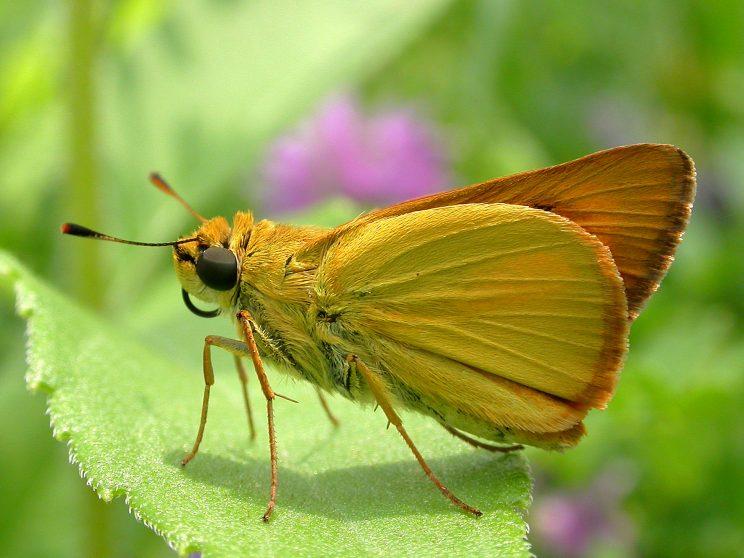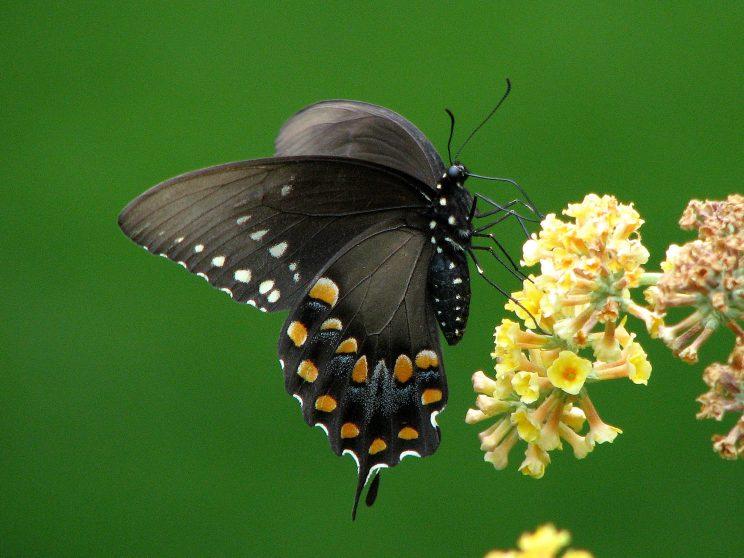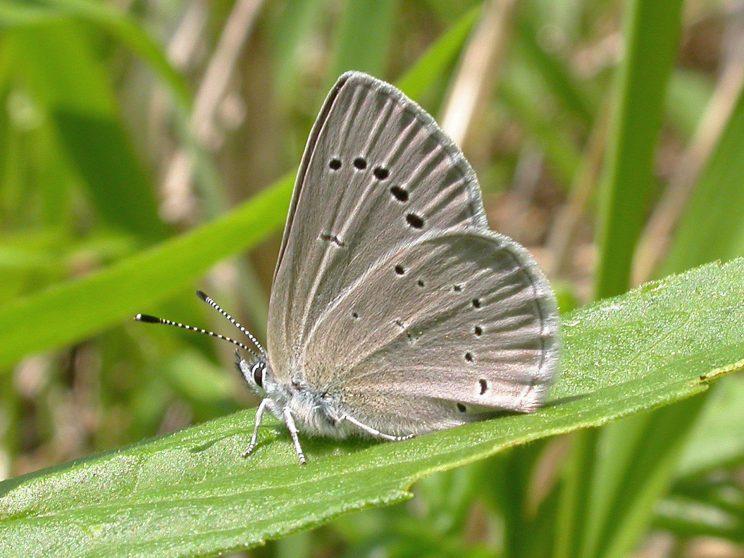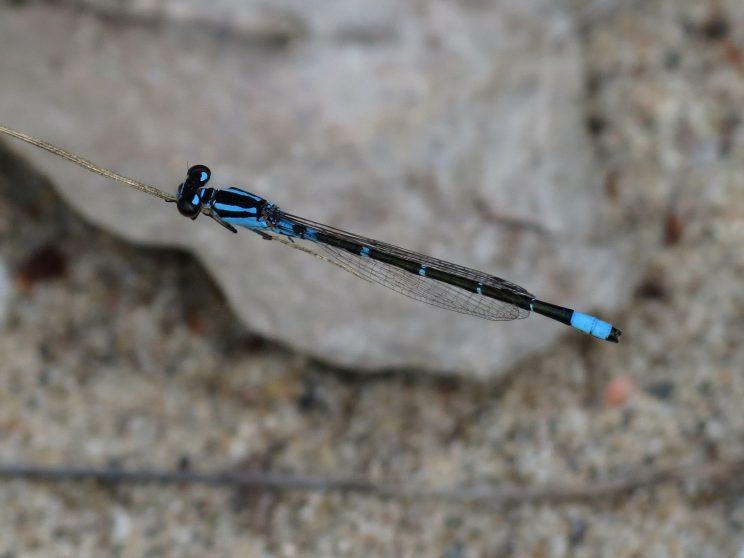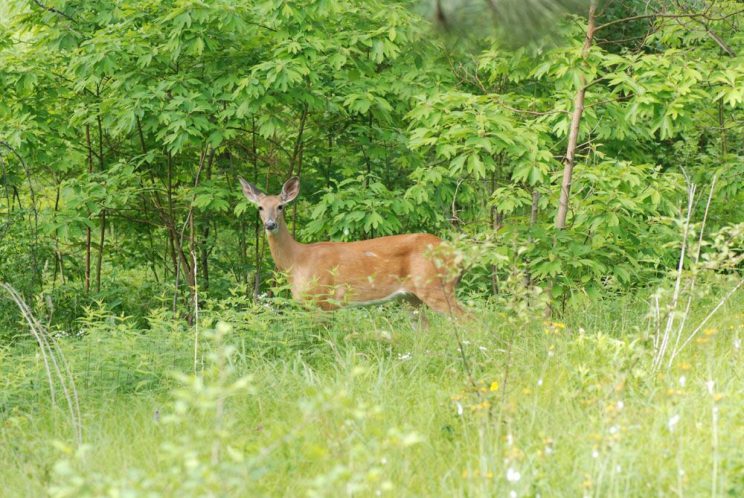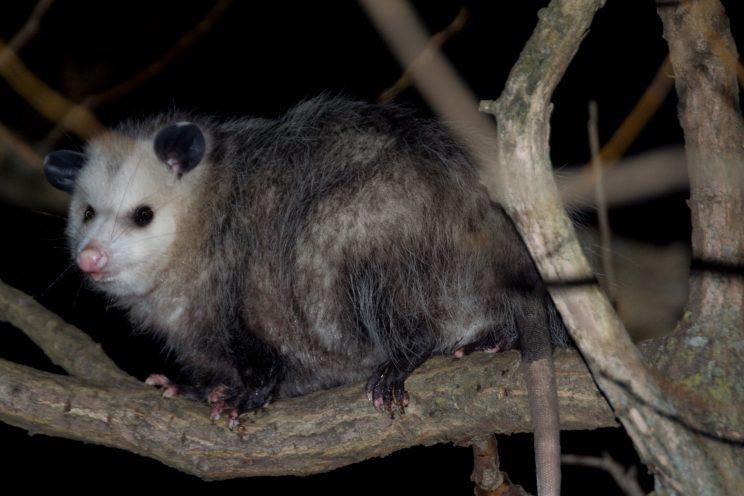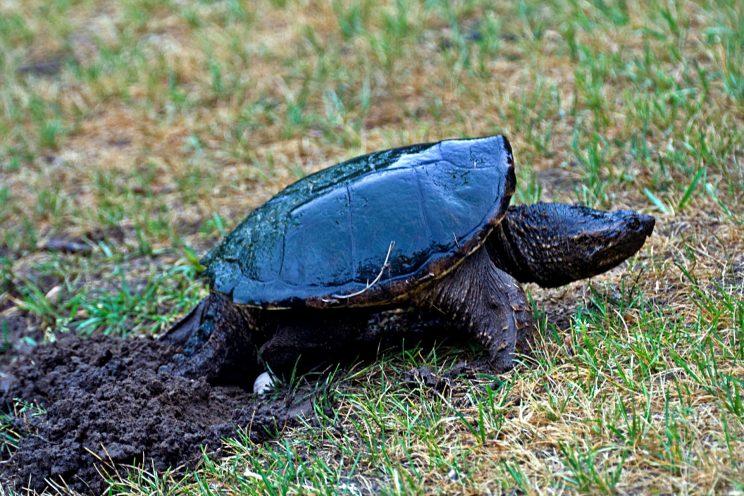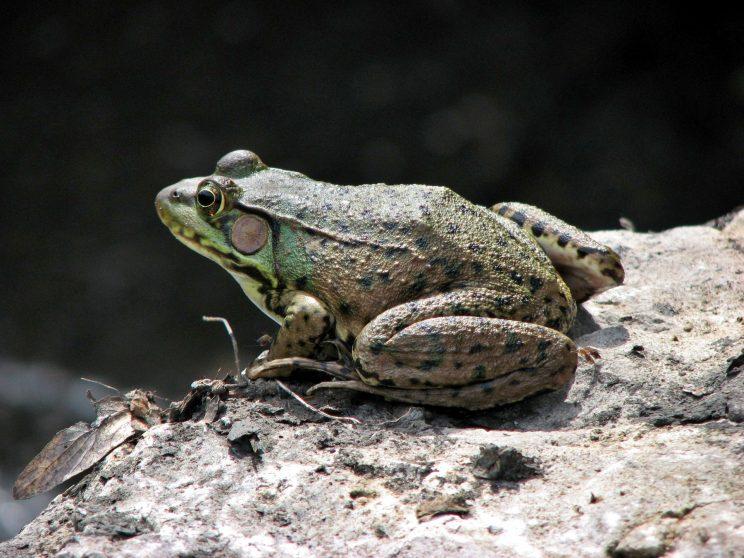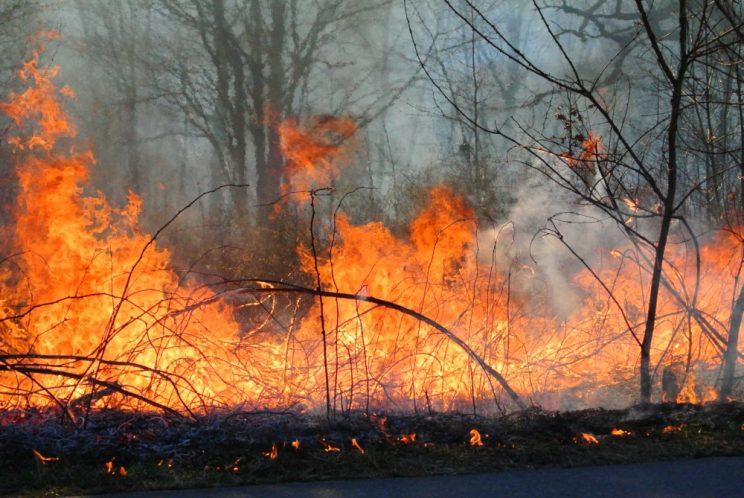by Bob Yukich
The restoration of terrestrial and aquatic habitats in High Park has helped bring back many species that once occurred here. New species may also be arriving due to other factors such as climate change and range extensions.
Birds using Oak Savannah
Dead trees left standing in Area 1D have provided new nesting sites for Wood Duck: in 2004 one downy young was found dead on ground at this site, close to Grenadier Pond, and a short distance from a suspected nesting cavity in a dead tree; in 2005 one downy young was observed swimming and feeding on Grenadier Pond a few feet from shore near this same site. Wood Duck is now a common breeder at Grenadier Pond and elsewhere in the park, most notably at the Lower Duck Ponds. Tree Swallows have also nested in dead tree cavities in Area 1D in recent years. Another cavity nester, House Wren, uncommon in the park, has been observed on territory here.
In general dead trees left standing, or lying on the ground, have provided new habitat for several species of birds, especially woodpeckers, as well as mammals, herps and insects, throughout the park. In recent years Hairy Woodpecker, a woodland species, has become a year-round resident in High Park, and is now breeding; it previously occurred here only during the winter months, and in migration. This species often prefers dead wood left lying on the ground for feeding, especially fallen trees, more so than our other resident woodpeckers.
Red-headed Woodpecker was historically common in High Park. A single pair bred here throughout much of the 1980s but has since disappeared, likely due to changes to its habitat within the park and elsewhere. This species is declining throughout much of its range; it is a cavity nester and prefers open areas, especially oak savannah, with standing dead trees or tree snags for nesting.
Birds using Woodlands
Cooper’s Hawk is now a year-round resident in the park where it breeds; in recent springs males have been observed performing courtship displays throughout the park. Sharp-shinned Hawk, its smaller relative, has nested in the park at least once in recent years. Prior to restoration I recorded neither of these secretive woodland species within the park during breeding season. Since restoration Red-tailed Hawk has become a year-round resident and has also bred in the park; the abundance of squirrels and chipmunks provides adequate food for this species.
Wood Thrush, a vulnerable species throughout its range due to habitat fragmentation, has been heard singing during the breeding season at a few locations in the park in recent years, and breeding has been confirmed. Prior to restoration I recorded this species during breeding season on only a few occasions.
In 2004, and again in 2005, a singing male Pine Warbler was observed during the breeding season in the vicinity of the greenhouses and the animal paddocks, as well as along Spring Rd.; in subsequent years males have been heard singing during the breeding season at various other locations in the park, including the tablelands; breeding has been confirmed. Red-breasted Nuthatches are now thought to occasionally breed in the park; they have been observed excavating nest holes in trees during the spring. Prior to restoration I recorded neither of these species during breeding season. The Pine Warbler sightings are particularly significant, as they are a local species that nest exclusively in pines.
Yellow-billed Cuckoo has been seen and heard south of the Forest School in recent years, and breeding has been confirmed; both Black-billed Cuckoo and Yellow-billed Cuckoo have been observed in Area 1C during the breeding season in recent years. A singing Yellow-throated Vireo was in this same area on one occasion during the 2004 breeding season. Typically, these birds inhabit more extensive pristine woodlands, and are not usually found within city parks during the breeding season. I had never recorded Yellow-throated Vireo within the park during breeding season prior to this sighting. The breeding status of both cuckoo species prior to restoration is uncertain.
Birds using Wetlands
As the park became more manicured (e.g., paving of shorelines, filling in wetlands), starting in the 1950s, several wetland species that historically bred in High Park disappeared. Since wetland habitat was created at the north end of the Lower Duck Pond in 2000, the number of species of birds breeding here has increased.
A Green Heron was observed in the cattail marsh at the Lower Duck Pond on a few occasions during summer 2003; breeding was not confirmed, and this individual may have just summered without a mate. This was my first record of this species in the park during breeding season. Green Heron was a regular breeder in wetlands at the south end of High Park during the 1940s and may once again breed here; it does breed in nearby Humber Marshes. The vegetation at the Lower Duck Pond also provides winter shelter and food for various songbirds, especially sparrows.
Great Egret, once a rare visitor during migration, can now be found regularly from spring through fall feeding at the Upper and Lower Duck Ponds as well as at Grenadier Pond. This species has recently colonized Tommy Thompson Park and likely the Humber Marshes.
Gadwall has successfully fledged young at the Lower Duck Pond in recent years; this species was not known to have bred in High Park previously.
Wood Duck has become a regular breeder at the Lower and Upper Duck Ponds and elsewhere in High Park. Prior to restoration I had only one breeding record of Wood Duck in the park, a female with a single downy young on Grenadier Pond.
The natural vegetation surrounding Grenadier Pond is improving. As the concrete edge is removed and more natural shoreline is allowed to regenerate, more habitat is created for wildlife. These naturalized sections of shoreline are still relatively small and only support breeding birds such as Red-winged Blackbird and Song Sparrow, species that will use marginal habitats. As longer stretches of shoreline are allowed to regenerate, this habitat will attract more species. This is now happening along the south shore of Grenadier Pond where Black-crowned Night-Herons feed in summer and waterfowl may nest. (Over a two-week period from late April to early May 2012, a mated pair of Canvasbacks, a rare species in Toronto, were observed at the south end of Grenadier Pond. At times only the male was seen. Once, I observed the male enter and then disappear into dense phragmites near the southwest corner of the pond where the female may have been sitting on a nest. On subsequent visits neither Canvasback was seen; they may have attempted to nest, but unsuccessfully.)
Since the marsh at the north end of Grenadier Pond was restored, phragmites, cottonwood and willow have taken over the mudflats that once provided food for migrating shorebirds, as well as ducks and herons; shorebirds are rarely seen here now. Some suitable feeding habitat still remains here for herons and ducks. In recent years Swamp Sparrow, a historical breeder in the marsh, has been heard singing here in June, and it may breed; prior to restoration I did not record this species here during breeding season.
Virginia Rail bred and fledged five young the very same year heavy equipment invaded their habitat in the marsh at the north end of Grenadier Pond during restoration in 1998 (my only breeding record of this species for the park); it is not known to have bred here since, but it does occur during migration; it likely bred historically.
Many migrating songbirds use shoreline vegetation for foraging and for cover, both in spring and fall; these habitats are also used by wintering birds for food and shelter.
More shoreline vegetation means more insects, which provide food for various breeding and non-breeding birds, including swallows that use the pond, and flycatchers such as Eastern Kingbird and Eastern Phoebe that may breed nearby. Virtually all breeding birds (including the seed-eating sparrows) require animal protein in the form of insects to feed their young.
Butterflies using Oak Savannah
Butterflies are one of the best indicators of a healthy ecosystem. Oak savannah that is being restored throughout the park now provides good habitat for several butterfly species, including Little Wood-Satyr, Common Wood-Nymph, Pearl Crescent, and various skippers and hairstreaks; American Lady caterpillars feed on everlastings; flowering plants in open sunny areas provide necessary nectar for adult butterflies; New Jersey tea is a preferred nectar source for hairstreaks, blues and various skippers; it is also one of the host plants of Summer Azure.
The oak savannah in Areas 1D, 1C and 1B and on the tablelands is one of the most diverse areas in the park for butterflies, and several unique species occur here. Big bluestem is the host plant here for Delaware Skipper, once uncommon but now a fairly common butterfly in the park. Crossline Skipper, usually uncommon and local throughout much of its range, has recently become fairly common in the park, especially on the tablelands; one of its preferred host plants is little bluestem. High Park may have the highest population density of Northern Cloudywings found anywhere in the province, with recent one-day counts of well over 100 individuals compared to high counts of less than 10 in a day prior to 2005. This species uses legumes, particularly tick trefoils, as host plant.
There was a single sighting of a Black Dash, a skipper whose larvae feed on wetland sedges, near a large burnt out tree in Area 1D in July 2004; in Canada this species was previously confined to southwestern Ontario, and had never been recorded east of Halton region prior to this sighting; it has since become a breeding species northeast of Toronto in northern Durham Region. In July 2007 a Broad-winged Skipper was observed nectaring on Wild Bergamot near the north end of Grenadier Pond, the first record for High Park since the 1930s; the larvae of this species feed on wetland sedges and phragmites. The same day a freshly emerged Bronze Copper was observed in the small wetland meadow along Grenadier Pond opposite the floral maple leaf; this species was previously known here from historical records only. How these three wetland species arrived in the park is uncertain. The closest known colony of Broad-winged Skipper is in the Rouge Valley. Bronze Copper has infrequently bred in suitable habitat at various locations along the Toronto waterfront. (In mid-July 2012, a Broad-winged Skipper was photographed on phragmites at the south end of Grenadier Pond, where it likely now breeds.)
Spicebush Swallowtail, a southern Carolinian species, rare in Toronto, has bred in the park in recent years; in 2008 and again in 2012 it was particularly common during the late summer; it breeds in areas where its host plants sassafras or spicebush occur (sassafras is the only host in High Park); males can be observed feeding and patrolling for females on the tablelands and at the Hillside Gardens. Spicebush Swallowtail may have bred in the park occasionally prior to restoration; improvements to the oak savannah have benefited this species (as well as other butterflies), but its increase in recent years may also be due to a northward range extension in response to climate change.
Silvery Checkerspot, a very local species in southern Ontario, has occurred in small numbers in Areas 1C and 1B in recent years; there was also a single sighting of one individual in the east side of the park in 2004 in Area 9B-1. There are no known historical records of Silvery Checkerspot for High Park. This species uses various composites as host plant, including woodland sunflower. Silvery Checkerspot had bred along the Humber River in the Eglinton Flats area at least since the 1990s, but has not been recorded there in recent years.
Silvery Blues now breed in the oak savannah in Areas 1D, 1C and 1B; this recent colonizer from the north uses non-native cow vetch as a host, but may even use wild lupine, as well as other legumes. This species was first recorded in High Park in 2003 in Area 1D; it is now widespread in Toronto.
Edwards’ Hairstreak has not been recorded in High Park since the mid-1990s and likely became extirpated from the park with the decline of young oaks. This hairstreak is a very local species throughout its range, and in our area young oak saplings, especially black oak, are its sole host plant. The larvae of this species have a symbiotic relationship with ants, providing them with “honey dew” in return for protection (the same relationship existed for the Karner Blue which is extirpated from the province). The only other known locations for Edwards’ Hairstreak in the Toronto region are Lambton Prairie, where it used to be common but has recently declined dramatically and may now no longer occur, and possibly South Humber Park where I once recorded a single individual.
Coral Hairstreak and Acadian Hairstreak were fairly common in High Park as recently as the 1980s but both had since disappeared. Then in July 2008, two Acadian Hairstreaks were observed and photographed in High Park: one a freshly emerged individual on the open hillside southeast of the Forest School, and the other a worn individual nectaring on Queen Anne’s lace near Grenadier Pond adjacent to Area 1D. Coral Hairstreak, whose preferred host plant is chokecherry, has not been seen in the park in recent years but may one day return.
White Admiral and Red-spotted Purple, northern and southern forms of the same species, are frequent in High Park and are often seen side by side; Toronto is within their zone of overlap, and hybrids between the two forms are common here. This species is most often encountered at woodland borders. Pre-restoration status of both forms in the park is uncertain.
Stinging nettles along Spring Creek and around the allotment gardens are host plants for Red Admiral, Eastern Comma and Question Mark. The striking (and rare in Toronto) Milbert’s Tortoiseshell, which also uses nettles as its sole host, was observed in High Park on a few occasions during the summer of 2007. While this plant is often considered undesirable, it is necessary for the lifecycle of several of our native butterfly species.
Wild Indigo Duskywing, a southern species of skipper arrived in Toronto in recent years following plantings of crown vetch, its adopted host plant; it has since colonized High Park in small numbers where there is very little of this non-native host; its native host wild indigo does not occur within the park, but a lesser used native plant, wild lupine, does. In July 2008 a female of this species was observed laying eggs on lupine leaves on the tablelands; this species may also use other plants in the legume family as hosts.
Insects using wetlands
Just as butterflies are indicators of the health of terrestrial ecosystems, dragonflies are a good indicator of the state of our wetlands. High Park was known historically for its diversity of dragonflies. Grenadier Pond once hosted a population of Halloween Pennant which disappeared from the park around 1906; this colourful dragonfly occurs very locally in southern and eastern Ontario, but almost nowhere else in the Toronto area; amazingly two males of this species were observed and photographed at the southwest corner of Grenadier Pond in early August 2008, after an absence of 102 years! Since its reappearance, this species has been observed in small numbers elsewhere along the pond, as well as on the tablelands. Other species associated with healthy aquatic habitats, such as Lilypad Clubtail and Swamp Spreadwing, also bred historically at Grenadier Pond. Although these species have since disappeared, Grenadier Pond and wetlands throughout the park still support a wide variety of dragonflies and damselflies (known collectively by the scientific name Odonata).
Eastern Amberwing, a Carolinian dragonfly which prefers ponds with lily pads, is common on Grenadier Pond but was not known here historically. Its status in High Park just prior to restoration is uncertain. In 2005 I observed several Skimming Bluets, a small species of damselfly also associated with lily pads, at Grenadier Pond, after having observed only a single individual of this species in the park in previous years. E. M. Walker, author of the definitive three volume work “The Odonata of Canada and Alaska”, wrote in the 1950s that Skimming Bluet, which prefers more oxygenated waters, was disappearing from High Park with the eutrophication of Grenadier Pond. These current sightings suggest that the health of the pond is improving.
A few species of dragonfly not known historically from High Park have been appearing here in recent years (some may have been overlooked in the past): Chalk-fronted Corporal, a dragonfly that can be quite common outside the city, especially further north, but not known from High Park, appeared at two locations along the Grenadier Pond shoreline in 2005; two Unicorn Clubtails, an uncommon and local species in the province, but never reported from High Park, appeared in late June 2005 at the then newly constructed Ridout Pond in the northeast corner of the park. This sedimentation pond now provides habitat for various species of odonate.
Fragile Forktail, one of our tiniest damselflies, can be fairly common along some stretches of Spring Creek and in other areas of the park where there is dense shoreline vegetation; this species tends to be uncommon and local elsewhere in our region; pre-restoration status is unknown.
Several immigrant species of dragonfly are attracted to the various wetland habitats in High Park; some may stay and breed. In some years the south end of the Upper Duck Pond in the southeast corner of the park has been particularly attractive to dragonflies and damselflies; Carolina Saddlebags, a rare, bright-red dragonfly from the southern U.S., has appeared here often since 2004 in early summer, and mating pairs have been observed. This pond has hosted a wide variety of local breeding species as well, and on hot summer days, if the right conditions exist (including lots of algae mats for egg-laying), its surface can be whirring with hordes of dragonflies. As wetlands continue to improve, new species of dragonflies and damselflies, as well as other aquatic insects, can be expected to be found within the park.
Dragonflies and damselflies have an immature “nymph” stage that lives in water; all are predators that feed on small organisms, including mosquito larvae; these nymphs also provide food for fish. All adult dragonflies and damselflies are predators that feed exclusively on other insects, including mosquitoes and other undesirable insects (as well as other dragonflies!)
Mammals
Opportunistic species such Red Foxes and Coyotes have exploited the abundant squirrel and chipmunk population in the park, and, in the case of Red Fox, now breed here. There have even been recent sightings of White-tailed Deer in the park in summer; they likely arrived via the lower Humber Valley where there is now a small population. Beavers have been active around Grenadier Pond in recent years, and the nocturnal Virginia Opossum is now common in the park.
Herps
Wetland rehabilitation within the park is providing better habitat for a variety of amphibians. The high-pitched trills of mating American Toads can be heard at Grenadier Pond and elsewhere in the park in late spring; this species now appears to be well-established here; pre-restoration status in High Park is unknown, but they must certainly have occurred historically.
Green Frogs breed, and can be seen or heard at various ponds in the park. Leopard Frogs are seen less frequently, and the occasional Bull Frog has been heard at Grenadier Pond; neither is known to have bred in recent times. All three species were released into park wetlands by a local naturalist in the last decade, and it remains to be seen whether any of these species will become well-established over the long term. Frogs have been declining worldwide for a number of years; further rehabilitation of wetlands within the park will only improve the chances of healthy frog populations within the park.
Grenadier Pond supports a large population of turtles. Unfortunately, most of these are the non-native Red-eared Slider, an exotic pet species that has been released into the pond by the general public; this species out-competes our native Midland Painted Turtle which is declining as a result. Public education is required to discourage further releases of this invasive species. A few Midland Painted Turtles can still be seen at Grenadier Pond: three small individuals were observed basking together on a log at the marsh at the southwest corner of the pond in summer 2005; others have occasionally been seen at the pond in subsequent years.
A baby Snapping Turtle was observed on the pedestrian pathway near the restored shoreline at the southeast section of Grenadier Pond in late September 2005. This shoreline vegetation gives much-needed cover to young turtles in avoiding predators as they enter the water, and can also provide cover for adult females leaving the pond to lay eggs. Nesting sites where recently-hatched baby Snapping Turtles have emerged are sometimes found near the pond, and adult turtles are occasionally seen.
Sources
This article doesn't have sources.
See also
For more information on wildlife species in High Park, please see the Wildlife section.

